
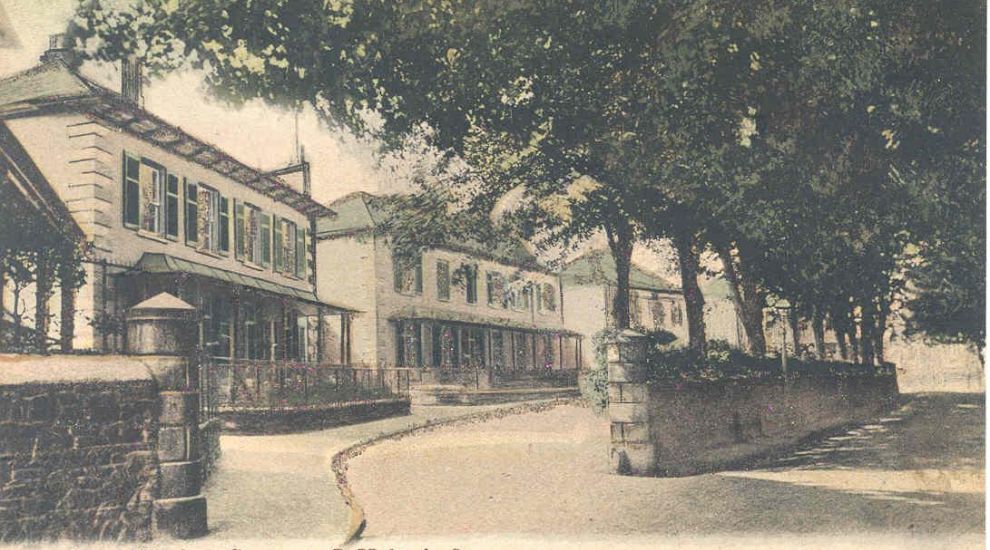

Over its long history, Val Plaisant has been home to many interesting individuals of varying backgrounds and professions. But one area in particular has been continually favoured by those in the medical profession...
This is the St. Helier neighbourhood where Val Plaisant crosses with David Place and Midvale Road.
A perfect example is Windsor Crescent, which has continued the tradition of housing residents in the medical field to the present day.
In particular, 8 Windsor Crescent had a seemingly uninterrupted succession of doctors and their families living at the property over at least 70 years. In 1881, it was the residence to Dr Walter Peel-Yates; in 1891 to Dr Claud Le Quesne; in 1901 to Dr Edward Colson; and in 1911 to Dr Arthur Stamberg.
These doctors were followed by Dr Brendan Bartholomew Kennedy, who lived at 8, Windsor Crescent during the Occupation with his wife, Dorothy, and their seven children, as well as three members of staff. The doctor was well-travelled, having journeyed with his family to Indonesia after residing in practice in Palestine, the birthplace of one of his children, as well as practicing in Ireland and Jersey.
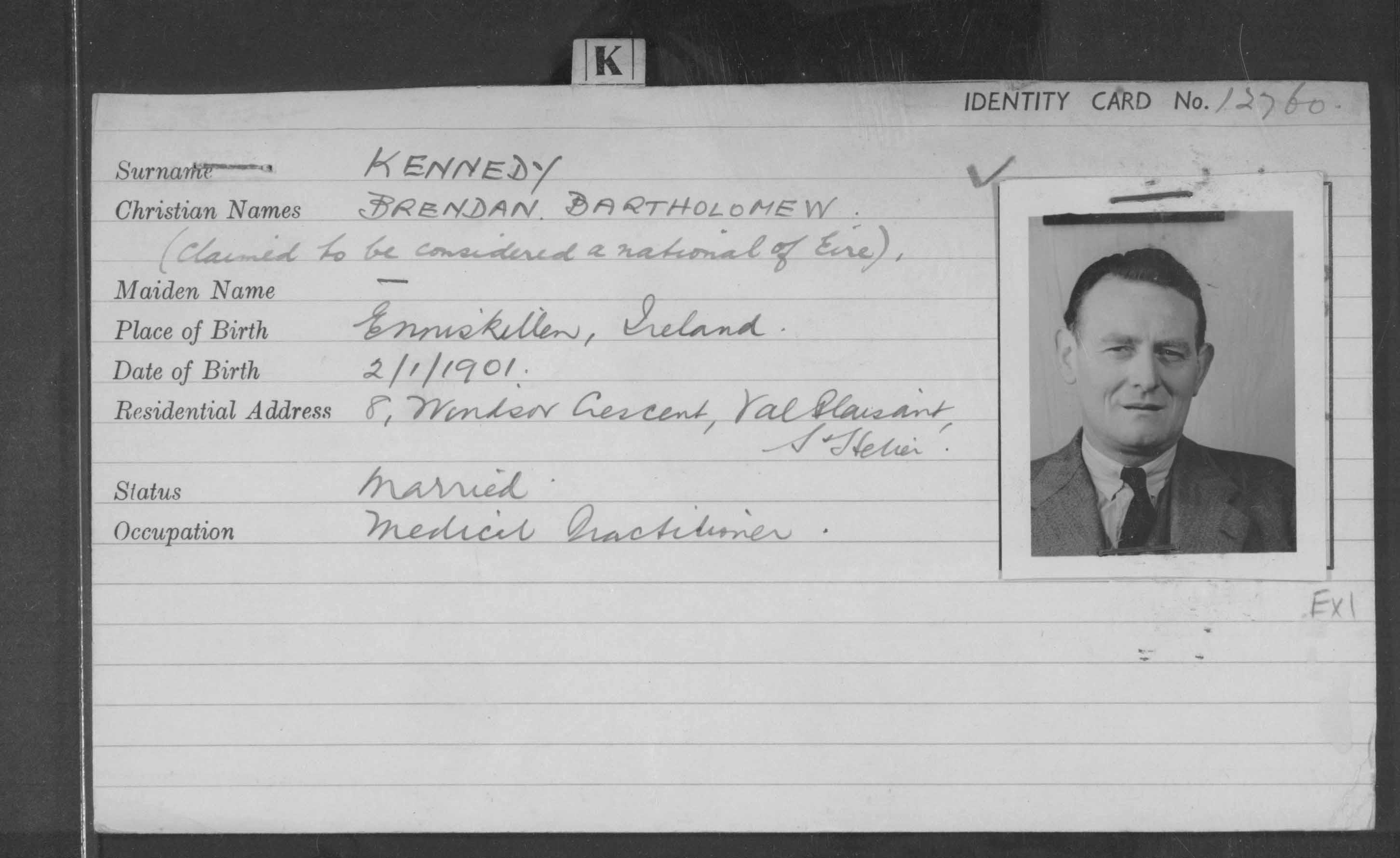
Pictured: The Occupation Registration Cards of Dr. Brenden Kennedy. (Jersey Heritage)
In his capacity as the Honorary Secretary of the Jersey Medical Society, Dr Kennedy wrote a letter to the Bailiff of Jersey in June 1945 requesting special consideration for those in the medical and nursing professions to be granted leave in the mainland. He stated that “after five years of strenuous, uninterrupted and unremitting service” and having reached “a stage of physical and mental exhaustion”, they were deserving of “a little rest”.
In response, the Bailiff acknowledged and sympathised with Dr Kennedy’s concerns, accepting that allowing medical staff a break could only be an advantage to the public health of Islanders. A list of doctors to be given permits to leave was drawn up in order of priority – Dr Kennedy himself was placed at the end of the list.
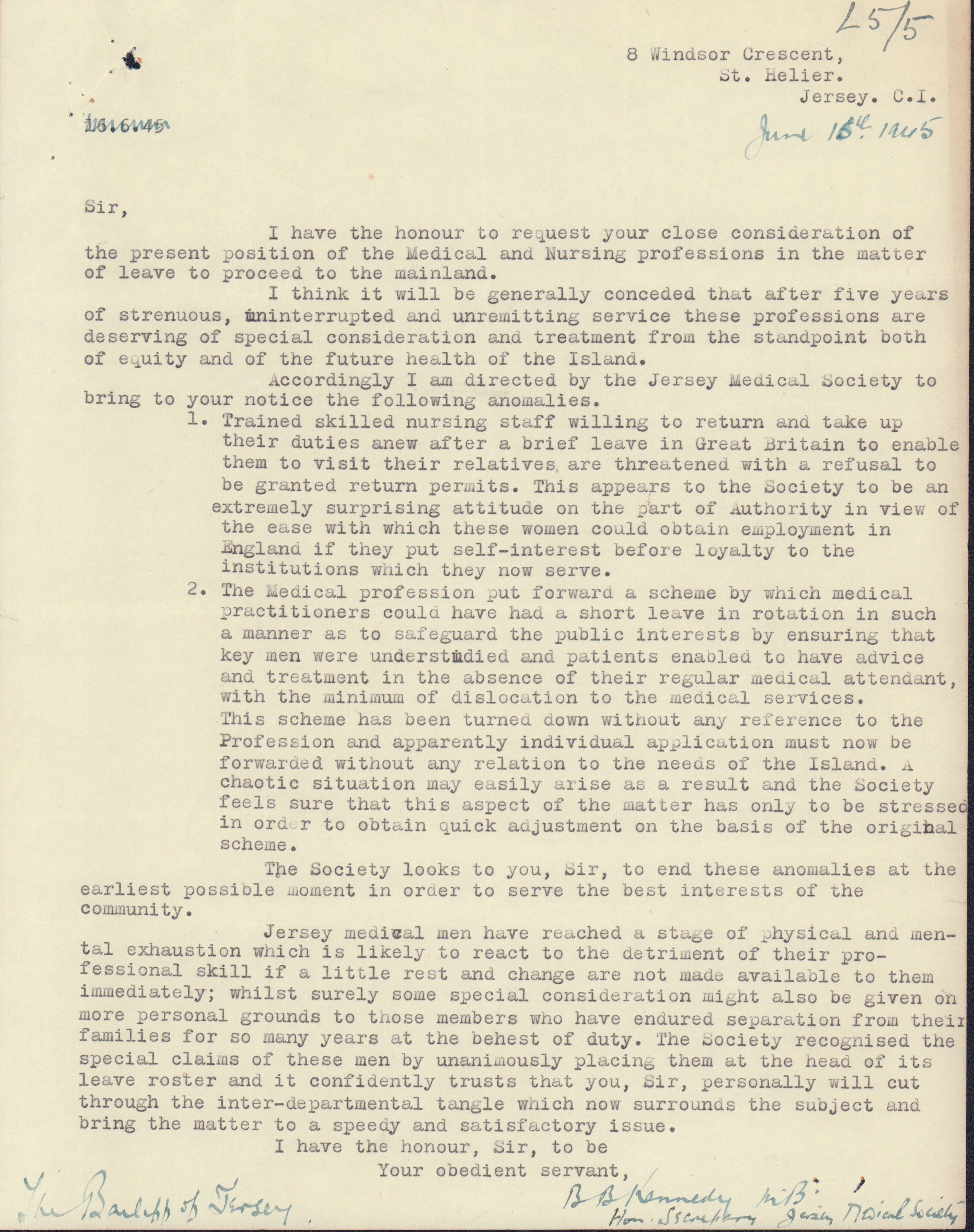
Pictured: A request for doctors to be granted leave following the occupation lodged by Dr Brendan Kennedy. (Jersey Heritage)
Marked two places above Dr Kennedy was Dr Florence Elizabeth Sexton, who lived at Egyptian Lodge, found on the opposite side of the crossroads from Windsor Crescent. So-called because of the building’s pseudo-Egyptian detailing, Egyptian Lodge was the residence of several practicing doctors from at least the 1870s through to the Occupation.
One of these was Dr Robert Maxwell Moffat, who was living at Egyptian Lodge in 1901 according to the census that year. He wrote several letters to the Editor of Jersey Independent and Daily Telegraph. One of these letters, published in 1893, considered the potential consequences of a cholera outbreak in the Island in the 1890s following its spread in mainland Europe.
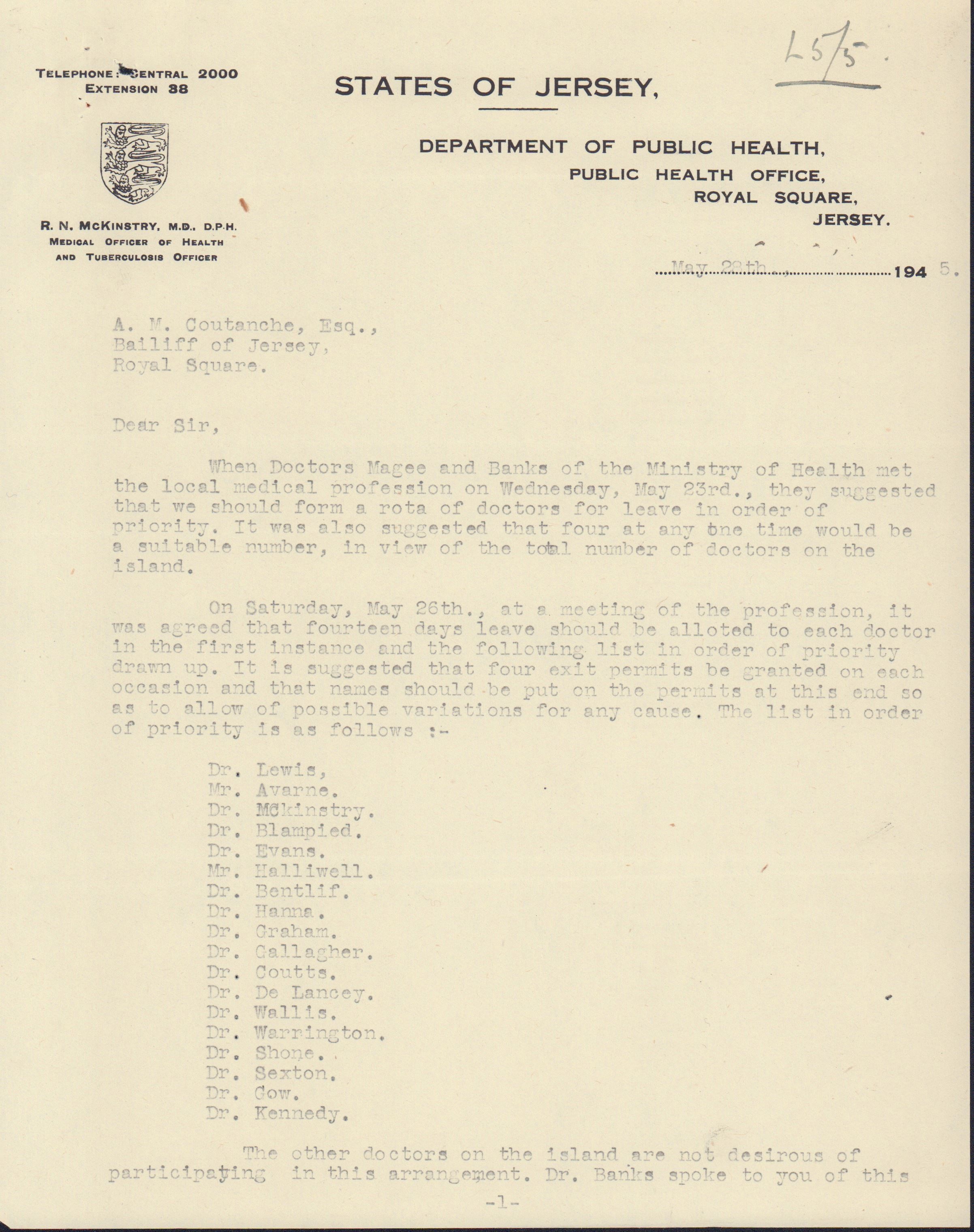
Pictured: The request for leave granted by the Department of Public Health. (Jersey Heritage)
Dr Moffat wrote of the impact infection could have on Jersey’s tourism and the sale of potatoes, as well as suggesting particular actions that could be taken to prevent the spread of infection. These included “a vigorous system of immediate reports under a penalty” and “isolation hospitals at convenient centres.”
The aforementioned Dr Sexton, born in Manchester in 1878, was granted permission to practice medicine and surgery in the Island during the summer of 1911. Although she would be based at David Place until at least 1925, it’s worth noting that prior to her residence at Egyptian Lodge, Dr Sexton was an active member of the community, giving talks at church services and lending a scientific voice to various events, including meetings of the Women’s Temperance Association.
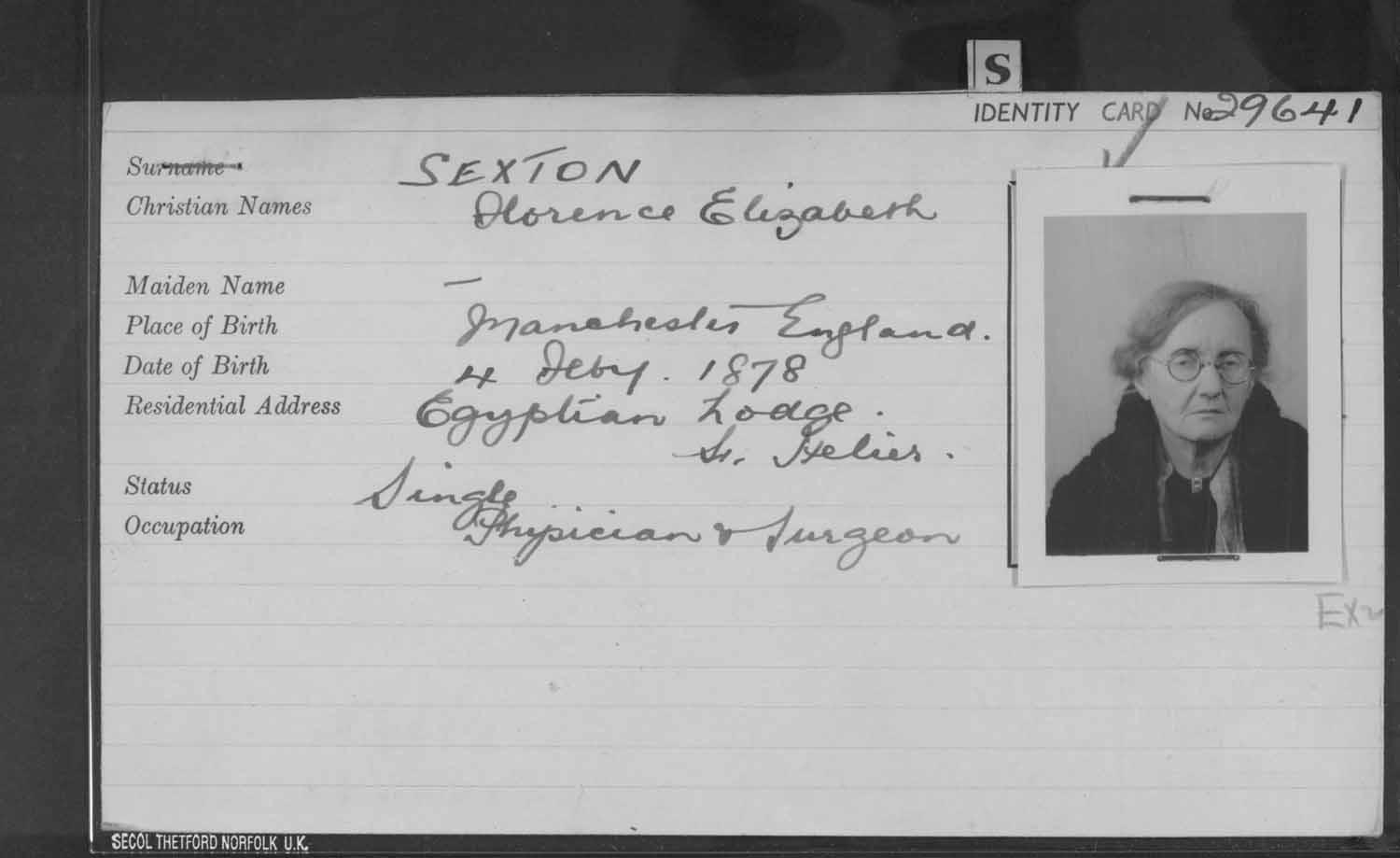
Pictured: Dr . Florence Sexton's occupation registration card. (Jersey Heritage)
In 1913, it was reported that she gave a series of six lectures to a large audience of ladies in the Royal Hotel. The first of these lectures focussed on the subject of “Air Breathing and Ventilation”, during which Dr Sexton performed experiments to show the properties of the gases that comprise air, and detailed the anatomy of the respiratory system and the mechanism of breathing, as well as explaining the importance of proper ventilation in the home.
She also spoke on the different methods of breathing, remarking that “natural breathing was greatly interfered with by tight corsets”. It would have been interesting to know if there were any members of her audience who took this knowledge to heart and decided to forego corsets from then on.
This article, put together by Archive Officer Georgie Bois, only touches on some of the stories of Val Plaisant, and forms part of Jersey Archive's 'What's Your Town Story?' series.
If you would like to find out more about the area, come to Jersey Archive this Saturday 15 October at 10:00 for the latest free ‘What’s Your Town’s Story?’ talk. To book your place, call 833300 or email archives@jerseyheritage.org.
The Archive is also open from 09:00 to 13:00 on Saturday for general research.
The history of the Sarum on New St. John's Road
Snowballs and 'fowl' play in court
The 'astrologer' of King Street
The 'ups and downs' of a Queen Street pub
Manslaughter and drunken mayhem by the Town Church
Comments
Comments on this story express the views of the commentator only, not Bailiwick Publishing. We are unable to guarantee the accuracy of any of those comments.